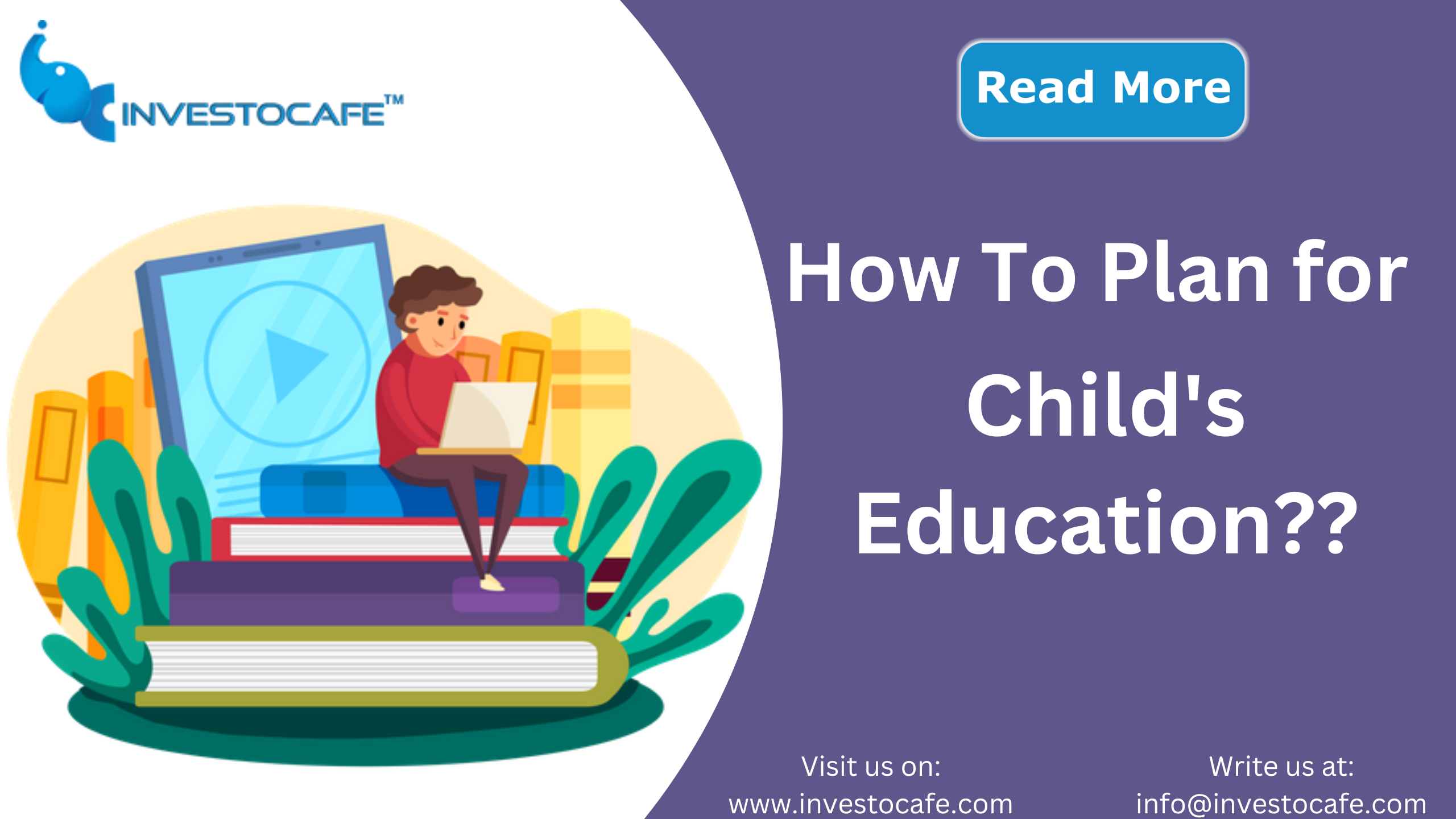
How To Plan for Child Education?
24 Mar 2023In India, the cost of education is rising rapidly. Parents are increasingly having difficulty meeting the growing fee structure and other education-related costs, from primary to secondary and higher education. The returns on your child's education fund need to keep pace with inflation because education costs are rising at a rate that is higher than normal.
As indicated by Public Example Study Office (NSSO), somewhere in the range of 2008 and 2014, the normal yearly confidential consumption for general training (essential level to post graduation or more) shot up by a stunning 175 percent while during a similar period, the yearly expense of expert and specialized schooling expanded by 96%.
Education inflation is estimated to be between 10 and 12 percent annually, according to rough estimates. An engineering course that currently costs Rs 6 lakh will cost around Rs 15 lakh in 16 years, even according to conservative estimates, assuming education cost inflation of 6% per year. In a similar vein, a 21-year MBA program would cost approximately 34 lakh rupees.
However, you should only use education loans to cover the difference between what you save and what you need. Therefore, if your children are still infants, and you have a few years before they will require financial assistance, the following steps will help you, self-fund their education.
- Set up a strategy: A target amount for a child's education needs must be established in order to implement a plan. It might be challenging for you to narrow down the career path that your child might pursue in the future because the world is witnessing the introduction of newer types of courses. Nevertheless, to get off to a good start, consider two to three career options and their current costs. Consider a conservative inflation rate of 8% per year for the number of years after which the child would need money to inflate it.
Determine how much you would need to put aside each month to pay for the requirement once you have estimated it. In the preceding example, assuming a 12% annual growth rate, you would need to set aside approximately Rs 2,600 per month for your child's engineering degree after 16 years and approximately Rs 3,100 per month for an MBA degree after 21 years. The figure can be obtained with the assistance of financial planners or online calculators.
- Essentials: Create a separate portfolio for the needs of children to improve financial management. Additionally, allocate funds for each child separately. "Create separate buckets of investments for education costs that will arise in the short term, medium term, and long term, respectively," according to Bose. Give each bucket its own regular savings account and closely monitor them.
Equities are the best option for long-term objectives. Equity has consistently outperformed all other asset classes, including debt, gold, and real estate, in terms of inflation-adjusted return over the long term.
- Portfolio: When children's needs are at least ten years away, equities should make up the majority of the investment portfolio. Thus, value situated instruments, for example, value common assets, ULIP with value reserve choices can be the backbone of one's portfolio. You can also use a public provident fund (PPF) account to pay for your child's education.
- Mutual funds for children's needs: Stick with equity-diversified schemes. Start your SIP with two to four equity-oriented mutual fund schemes that include both large- and mid-cap funds. In the same mutual fund portfolio, keep adding additional birthday gifts for children or gifts from grandparents. One can even save money for children's needs and pay less tax by investing in equity-linked savings plans. Redeem units while maintaining the investment whenever the child requires funds for education. It is preferable to finance short-term requirements using current earnings. SIPs in balanced funds are a good option for accumulating funds for 3-5-year education goals, and SIPs in mid- and large-cap equity funds are suitable for longer-term goals. Child ULIP One may even consider investing through child ULIP with the waiver of premium feature to ensure that the child receives the required amount at the desired age. To get the most out of the child ULIP equity fund option in the long run, invest in it. If you're a parent, you should make sure you have enough life insurance, preferably a pure term plan, so that anything bad doesn't get in the way of your kids' needs.
- Opening a public provident fund (PPF) account: It is another option for investing for child needs. PPF is a 15-year plan that would help the child build a tax-free fund. Partially withdraw funds anytime after the sixth year, or at the beginning of the seventh year, as and when the child requires them. Contributions can be made by the child when they are adults, and the same account can be kept open forever. Keep in mind, however, that PPF is a debt investment with a low inflation-adjusted return, limiting wealth creation. Additionally, the annual limit for both parent and child PPF accounts is Rs 1.5 lakh.
Conclusion:
By switching from equity to less volatile debt assets, the funds designated for children's education that are at least three years away from the goal are de-risked. Keep in mind that the child investment portfolio should only be used for its intended purpose. Regardless of whether you were to stop your month-to-month putting something aside for some time, don't reclaim your objective based venture to fund other momentary necessities. One of your most treasured goals from the moment your child was born was funding their education. Therefore, you should not do anything that prevents you from realizing your dream.
Happy Investing !!!
Visit www.investocafe.com to know about mutual fund investment options and stay on path of financial freedom
Written by: Tanish Goswami
To get in touch, write to tanish.goswami@investocafe.com or reach through www.investocafe.com.
To get in touch please visit us at investocafe.com

